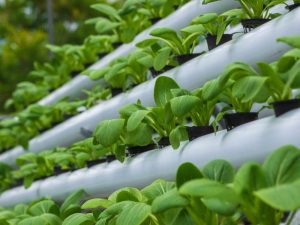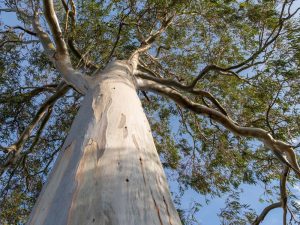Last Updated on April 21, 2025 by teamobn
Four seasons landscaping provide interest all year long. We are all struck by the breathtaking diversity of flowers that bloom in spring or the brilliant gold of fall foliage. But the landscape is there all year. Why shouldn’t it look beautiful year-round?
While many think landscaping is a summer activity, carefully selected plants, regular maintenance, and some creativity can produce a landscape that is pleasing across all four seasons of the year.
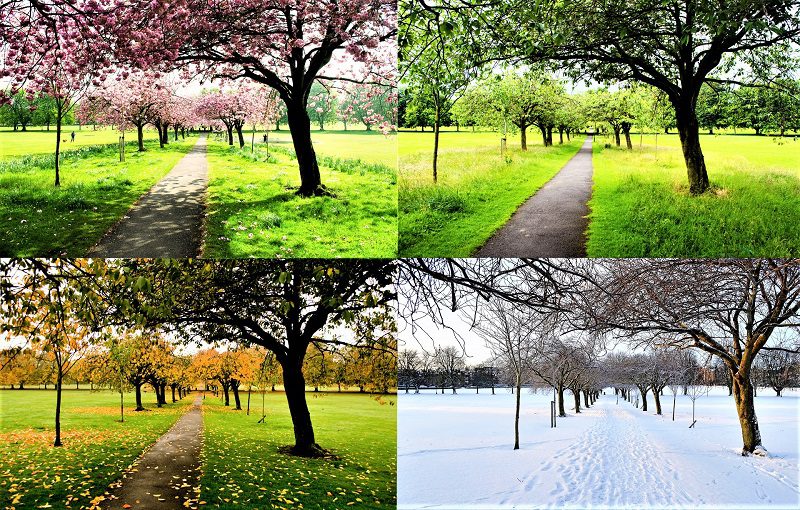
6 Creative Four Seasons Landscaping Design Ideas
Contents
The central design idea behind a four-season landscaping is to group plants that bloom sequentially. This ensures that an area of your garden is in bloom for as long as possible each season.
Where flowers don’t provide interest, you can use elements like foliage and trees to draw the eye and create attractive colour and texture combinations that last all year.
Below are 6 four-season landscape design ideas to help you create an outdoor space that will engage your imagination and interest throughout the year.
1. Think beyond flowers.
Designing a four-season landscaping begins with choosing appropriate plants and trees for your region. The most attractive four-season gardens build on the wondrous diversity of plants.
This is why a good four-season landscape design includes a combination of flora that reveals all of the beauty and variety of the plant kingdom.
If your locale does not allow you to accomplish a wide array of colours throughout the year, you can still achieve an impressive landscape aesthetic by using plants with interesting foliage.
Plants will flower at different times of the growing season. They have different growth habits and they will produce striking and colourful foliage.
For example, some trees and shrubs have broadleaf evergreen or needle-leaf vegetation. Deciduous trees and shrubs, on the other hand, grow flowers, fruit, or colourful fall foliage.
The best four-season landscape design ideas combine these and other traits to create beauty and emphasize the interesting features of the landscape.
2. Use trees and shrubs as a foundation for your four-season landscape design.
Quite apart from achieving correct form and function, a four-season landscape is premised on two other main design objectives. The first brings immediate gratification. The second objective involves long-term development.
Trees and shrubs are relatively more expensive than herbaceous plants. They are also a long-term investment. As trees and shrubs grow, they change the appearance of the garden by creating shady micro-environments.
Trees save you money by reducing the amount of energy you use to cool your home. They also provide smaller plants with some shade from the hot afternoon sun. To make the best use of this characteristic, consider how their influence over your four-season landscape changes throughout the year.
Choose trees that produce flowers in the spring like the dogwood – or trees with attractive bark patterns like birches. You may also select trees that yield colourful fall foliage like the maple. These trees will bring more than just their size and shape to your four-season landscape.
Some trees combine several of these traits for four-season interest. These include the paperbark maple with its showy fall colours and the deciduous katsura tree, with its beautiful shape and attractive foliage. Broadleaf evergreen trees like hollies and spruces like the conifer provide colour and structure during the winter. They likewise provide shelter for an interesting variety of wildlife.
Shrubs, on the other hand, can become the focal point of a four-season landscape as they burst with flowers, fruit, or foliage in season. The most flamboyant examples are lilacs, forsythias, and azaleas. These shrubs produce a multitude of flowers in the spring. They then blend into the background for the rest of the year.
Viburnums offer interest across three seasons. They flower in the spring; and produce deep blue, black, or red berries in the late summer. In the fall, viburnums turn a startling variety of autumnal colours. Camellias and daphne meanwhile bloom in the fall, winter, and early spring when the rest of the garden is dormant.
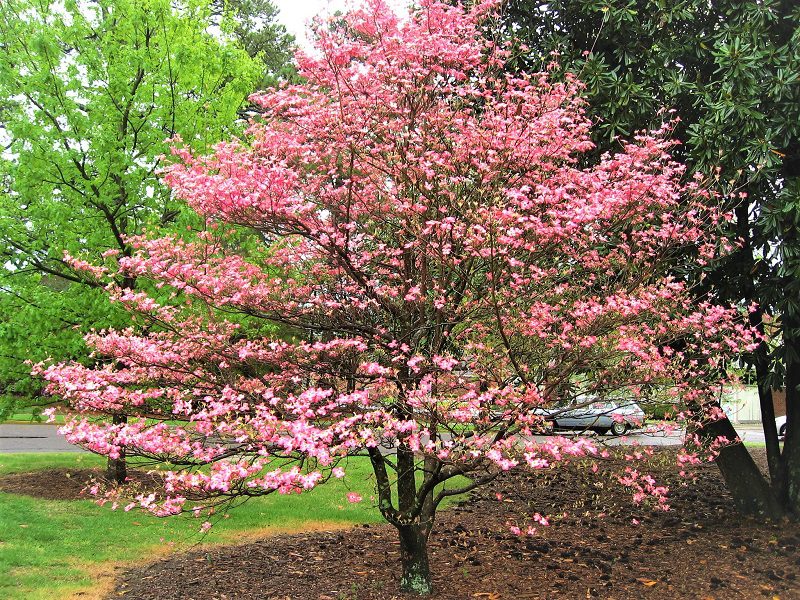
3. Use mixed perennials for their lavish and dynamic colour.
The best four-season landscape design ideas incorporate the diverse leaf colours, textures, and bloom times of numerous perennial plant species.
This creates a dazzling, ever-changing mosaic of colour and texture throughout the year. In fact, experienced gardeners prize evergreen and winter bloomers because these plants provide a welcome touch of colour to the dull grey of the coldest months of the year.

Most perennials produce leafy vegetation in the spring and bloom flowers for a few weeks during the spring, summer, or early fall.
The tops of perennial plants die back while the roots remain dormant through the winter. But some of the best four-season plants boast evergreen foliage – or flowers – in the winter.
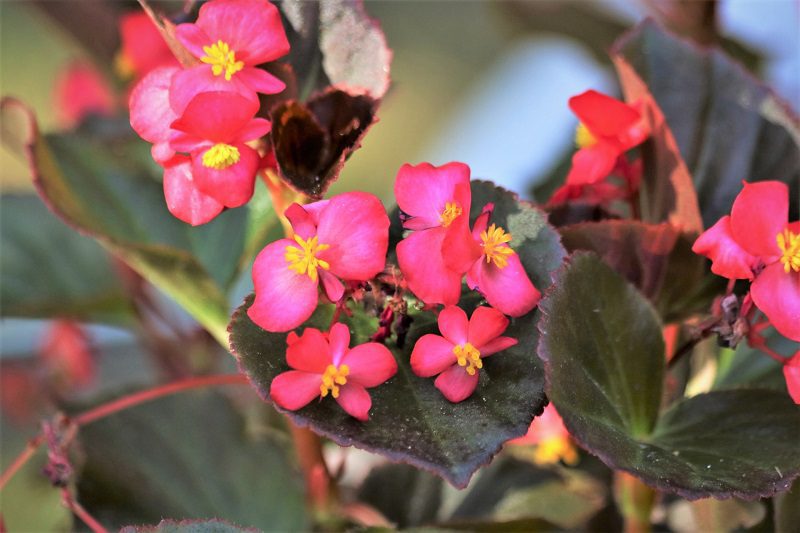
4. Grow annuals in your four-season garden for consistency and cheerful colour.
Up until a few years ago, gardening stores carried a limited variety of annuals – mostly marigolds, geraniums, and impatiens. But today, most garden store greenhouses offer a dazzling collection of annual plants.
Annual flowers are herbaceous plants that grow in only one season. They produce flowers from start to finish. Because of the cost and work involved in replanting annuals for each season, we suggest that you use the plants in small pockets throughout the landscape.
Plant them in containers or in flowerbeds near walkways and entrances. In mild climates, gardeners use warm-season annuals like begonia and impatiens in the summer. You can then grow cool season annuals such as pansies and snapdragons for the winter.
As trees, shrubs, and perennials go through their changes, annuals will provide consistency and an exuberant pop of colour throughout the growing season.
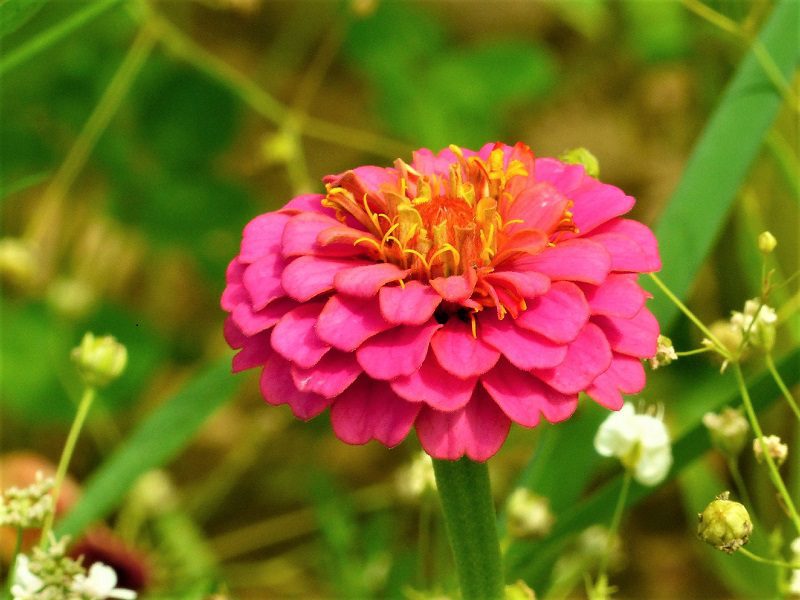
5. Think in layers.
While straight lines may have some visual appeal, few things in life ever follow that rule. This is especially true in nature. To create easy visual interest for your four-season landscape, layer in plants of tall, medium, and small heights to mimic nature.
Landscape layering involves a variety of plants arranged into a staggered foreground, middle-ground, and background to create casual, mixed border plantings.
The taller flora will form the natural focal point. Small and medium-sized plants will play more of a supporting role.
For added visual appeal, do your best to ensure that each layer each capture at least three seasons. For example, pair a tall Japanese maple for fall colour with spirea for spring and fall colour. You can then layer a row of daylilies to provide summer colour.

6. Include maintenance in your four-season landscape planning.
You should include maintenance in your four-season landscaping design. Maintenance ensures that your garden always looks fresh. Trees and shrubs require occasional pruning to remove dead branches. Pruning likewise preserves a tree’s attractive shape.
You will need to divide perennials every three to five years to stimulate robust growth and blooming. You can cut them back when the tops die each year for a tidy appearance. Meanwhile, you need to change your annuals seasonally.
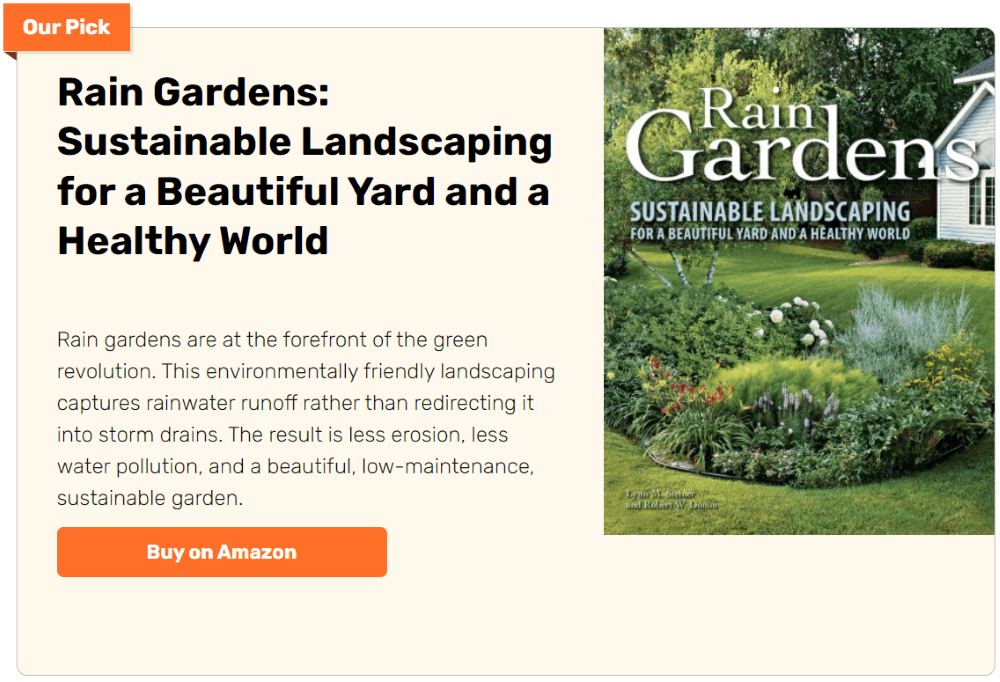
Good gardening practices such as mulching, weeding, watering, and fertilizing will help your four-season landscape reach its potential. Mulch, in particular, feeds plants as it breaks down and keeps the roots moist. Mulch also suppresses weeds, cools your plants in the summer, and warms them in the winter.
We suggest that you permit some spent flowers to stay on from time to time. Spent flowers are an excellent way to add colour and interest to a winter garden. They likewise offer food and cover for birds and overwintering pollinators.

Choosing the Right Hardscape Elements for Four Seasons Landscaping
A beautiful landscape isn’t just about plants. Hardscape features create structure, enhance function, and keep your garden visually appealing throughout the seasons. When chosen carefully, these elements enhance your four seasons landscaping by providing interest even when flowers and foliage fade.
Start with Durable Materials
Hardscape surfaces should be able to withstand weather changes throughout the year. Look for materials like natural stone, brick, or concrete pavers that can handle freeze-thaw cycles. These options hold up well and provide texture and visual weight in winter when the greenery is minimal. For walkways and patios, slip-resistant finishes are also essential for safety during icy months.
Add Visual Structure with Retaining Walls and Raised Beds
Retaining walls and raised garden beds aren’t just practical. They bring year-round structure and elevation to your outdoor space. These features help define garden zones while offering support to plantings in every season. When done right, they give your four seasons landscaping a balanced and polished look, especially in winter when architectural lines become more visible.
Incorporate Focal Points That Work Year-Round
A fire pit, stone bench, or water feature can serve as a visual anchor throughout the year. These elements are especially important in colder months when flowering plants are dormant. A well-placed boulder, sculptural urn, or even a birdbath can create a focal point that keeps the landscape engaging in all seasons.
Blend with the Natural Surroundings
Choose hardscape colors and textures that echo the environment. Earth-toned stones, weathered wood, and rusted metal accents blend better with seasonal plant changes. These materials adapt visually as spring blossoms shift into summer greens, autumn reds, and winter browns, making them ideal for four seasons landscaping.
Think About Maintenance and Longevity
Low-maintenance hardscapes let you enjoy the garden without constant upkeep. Choose materials that require little sealing or cleaning. Avoid surfaces prone to cracking or fading in sun, frost, or rain. This ensures your four seasons landscaping remains attractive and functional no matter the weather.
Hardscape design supports the entire garden layout. When integrated thoughtfully, these elements enhance beauty and usability across all four seasons.

Lighting Your Four-Season Landscape for Maximum Effect
Lighting plays a powerful role in making your garden feel alive after sunset. It adds warmth, highlights textures, and brings out colors even during the coldest or darkest days of the year. When planned well, outdoor lighting can elevate your four season landscaping by drawing attention to the best features of each season.
Highlight Key Features Year-Round
The right lighting design will showcase your trees, pathways, and architectural elements throughout the year. In spring and summer, it can emphasize flowering shrubs and garden beds. Come fall, it brings out the richness of golden leaves and the beauty of seasonal planters. During winter, lighting transforms bare branches and evergreen trees into dramatic silhouettes. Spotlights, uplights, and well lights help ensure your four season landscaping looks vibrant even when daylight hours are short.
Create Layers of Light
Just like your planting design includes layers of height and texture, your lighting should also use a layered approach. Start with path lights to ensure safety and guide movement through the garden. Then add accent lights to highlight focal points like statues, fountains, or a beautiful tree. Finally, use ambient lighting—such as string lights or wall-mounted fixtures—to set the mood and invite people to spend time outdoors.
Use Warm Bulbs for a Natural Look
Color temperature affects how your garden feels at night. For four season landscaping, warm white lighting works best. It creates a cozy, natural glow that complements both summer blooms and winter snow. Avoid harsh, cool-toned lights that can make your outdoor space feel sterile. You want the light to enhance your plants and hardscape, not overpower them.
Opt for Energy-Efficient and Weather-Resistant Options
Outdoor lights need to perform through all kinds of weather. Select fixtures rated for exterior use and ensure they are durable enough to withstand rain, wind, and snow. Solar and LED lighting are great energy-efficient options that save on electricity and last longer than traditional bulbs. These options are especially practical for maintaining a four season landscaping setup without constant replacements or high energy bills.
Design for All-Season Enjoyment
Don’t limit lighting to just the patio or deck. Add lighting near seasonal flower beds, under tree canopies, and along fences or pergolas. This creates depth and continuity, regardless of the time of year. With the right lighting plan, your four season landscaping doesn’t fade into the background—it shines.
Four-Seasons Landscaping for Year-Round Beauty
Planning a four seasons landscaping requires much more research and organization than a simple flowerbed. You will need to read and learn much more than you do now if you are to build your landscape with trees and shrubs that offer different kinds of interesting colours and shapes, perennials that bloom at strategic moments throughout the year, and annuals that bring bright colour and consistency.
Four seasons landscapes are an ongoing endeavour, as well. They require meticulous attention throughout the year.
Ultimately, they reward those who enjoy spending time in their yard with lush, ever-changing beauty that engages both the eye and the imagination throughout the year.


